Dharma Talks
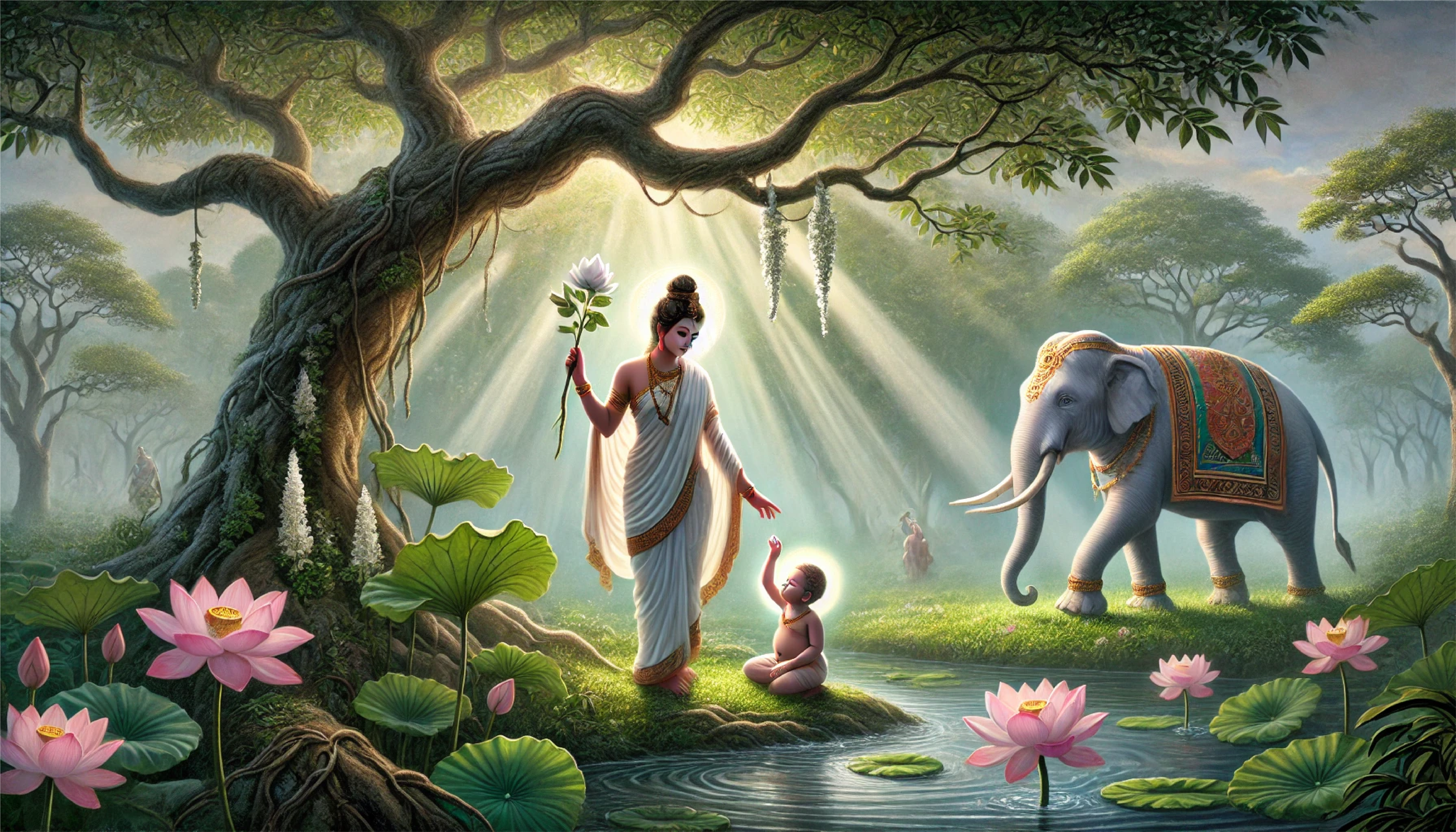
The Buddha’s Birth
Story: According to Buddhist tradition, Queen Maya, the Buddha’s mother, had a miraculous dream in which a white elephant holding a lotus flower entered her womb. This dream was interpreted by the court sages as a sign that the child she would bear was either destined to become a great king or a fully enlightened Buddha. When the time of birth approached, Queen Maya was traveling to her parents' home, but along the way, in Lumbini Garden, she gave birth to Siddhartha Gautama while standing and holding onto the branch of a tree. As soon as Siddhartha was born, he took seven steps and declared, "I am the foremost in the world; this is my last birth."
Lesson: The Buddha’s birth story symbolizes his unique role in human history. His declaration at birth foreshadows his mission to help all beings overcome suffering and attain enlightenment. The white elephant and lotus flower in Queen Maya’s dream are symbols of purity and spiritual power, representing the Buddha’s role as a guide on the path of awakening.
Reflection: This story invites reflection on the rarity and significance of an enlightened teacher appearing in the world. It encourages gratitude for the teachings of the Buddha and underscores the importance of using this human life for spiritual development.
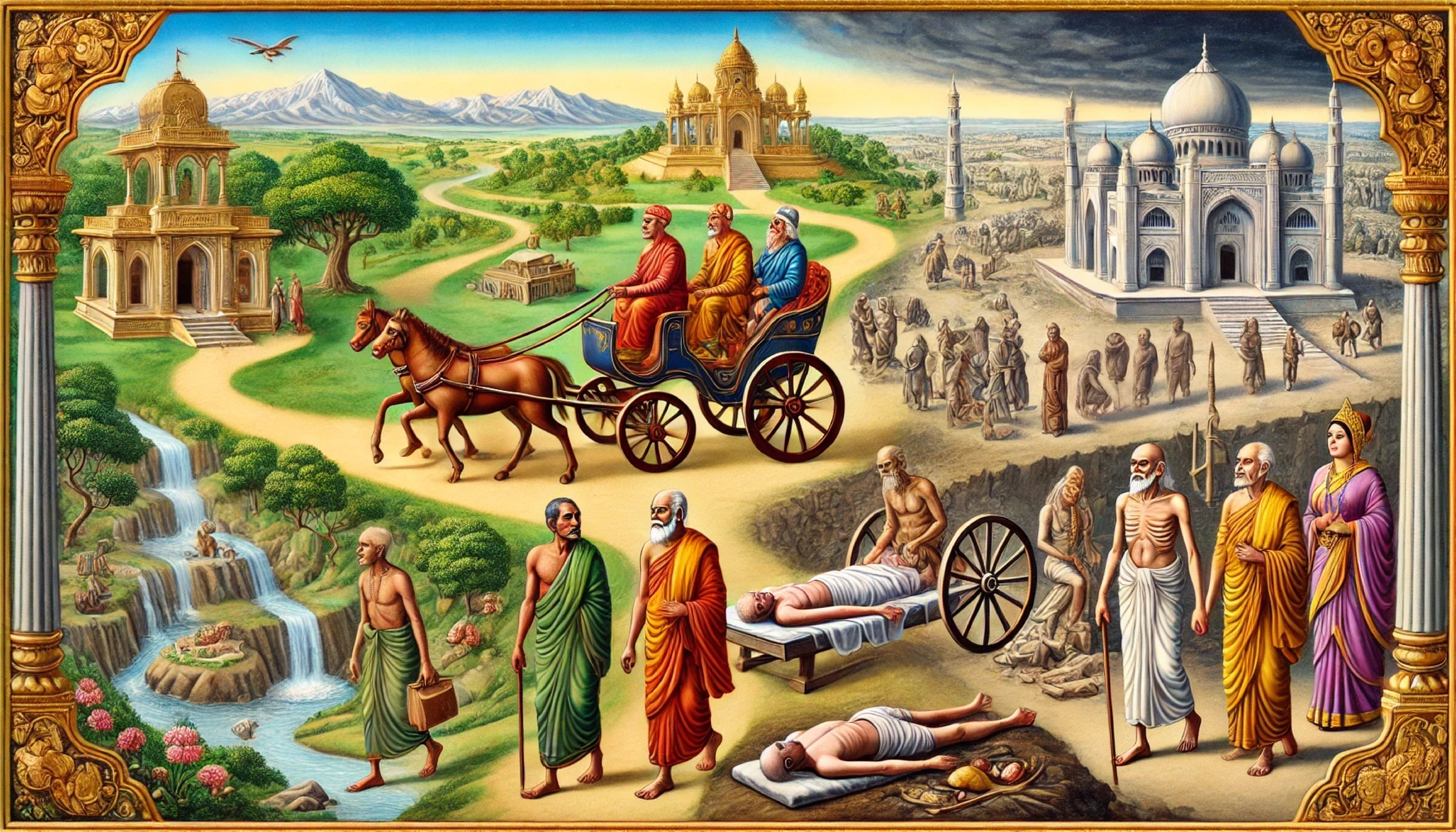
The Four Sights
Story: Prince Siddhartha grew up in the luxury of his father’s palace, shielded from the harsh realities of the world. His father, King Suddhodana, wanted to prevent Siddhartha from seeing suffering, hoping he would become a great ruler. However, one day, Siddhartha convinced his charioteer, Channa, to take him beyond the palace walls. On his first outing, he encountered an old man, bent with age. On subsequent trips, he saw a sick man, a corpse, and finally, an ascetic who had renounced the world. These Four Sights deeply affected Siddhartha, making him realize the inevitable nature of suffering and igniting his quest to find a solution.
Lesson: The Four Sights highlight the fundamental Buddhist teaching that suffering is an inescapable part of life. The first three sights—old age, sickness, and death—represent the impermanence of all beings, while the sight of the ascetic offers hope through spiritual practice. This story is a reminder that even in the face of life's inevitable hardships, there is a path that leads beyond suffering.
Reflection: For practitioners, the Four Sights encourage the contemplation of impermanence (anicca) and suffering (dukkha). Recognizing the fleeting nature of life can inspire a deeper commitment to spiritual practice and the pursuit of wisdom.

The Great Renunciation
Story: After witnessing the Four Sights, Siddhartha felt that the pleasures of palace life were hollow in the face of human suffering. One night, he quietly left the palace, abandoning his royal life, his wife Yasodhara, and his newborn son Rahula. This act, known as the Great Renunciation, marked the beginning of Siddhartha’s journey as a wandering ascetic, seeking the truth that would end suffering. He spent the next six years practicing extreme forms of self-denial, including fasting until he was nearly skeletal.
Lesson: Siddhartha’s renunciation teaches the importance of letting go of attachments to worldly pleasures and material comforts in the search for deeper truth. It also highlights the Buddha’s dedication and willingness to sacrifice everything in pursuit of enlightenment.
Reflection: The Great Renunciation challenges us to examine our own attachments and ask ourselves what we might need to let go of in order to progress on the spiritual path. It also shows that the desire for liberation from suffering can be stronger than any worldly ties.
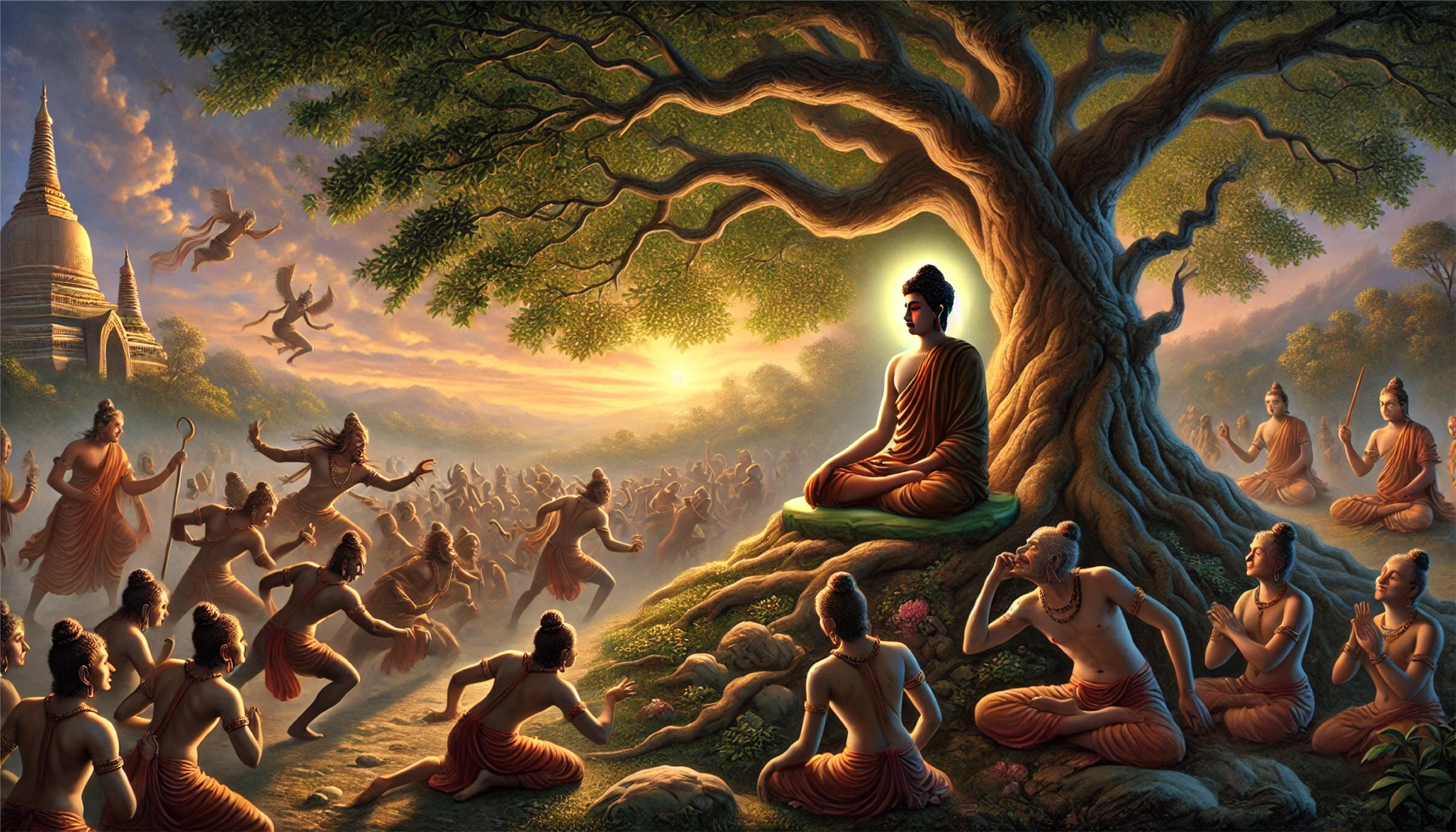
The Buddha’s Enlightenment
Story: After years of extreme asceticism, Siddhartha realized that self-mortification was not the way to enlightenment. He adopted the Middle Way, a path of moderation between indulgence and self-denial. He then sat under the Bodhi tree in Bodh Gaya, vowing not to rise until he had achieved enlightenment. Over the course of the night, he was confronted by Mara, the god of desire, who attempted to distract and dissuade him with temptations, fears, and doubts. Siddhartha remained unmoved, and as the morning star rose, he attained enlightenment, realizing the true nature of reality and the cessation of suffering.
Lesson: The story of the Buddha’s enlightenment emphasizes the importance of perseverance, mindfulness, and inner strength. The Middle Way, which the Buddha discovered, teaches balance in life—avoiding both extremes of indulgence and extreme austerity.
Reflection: The Buddha’s triumph over Mara symbolizes overcoming the inner forces of greed, hatred, and delusion that keep us trapped in suffering. It reminds practitioners of the importance of mental discipline and deep meditation in the pursuit of liberation.
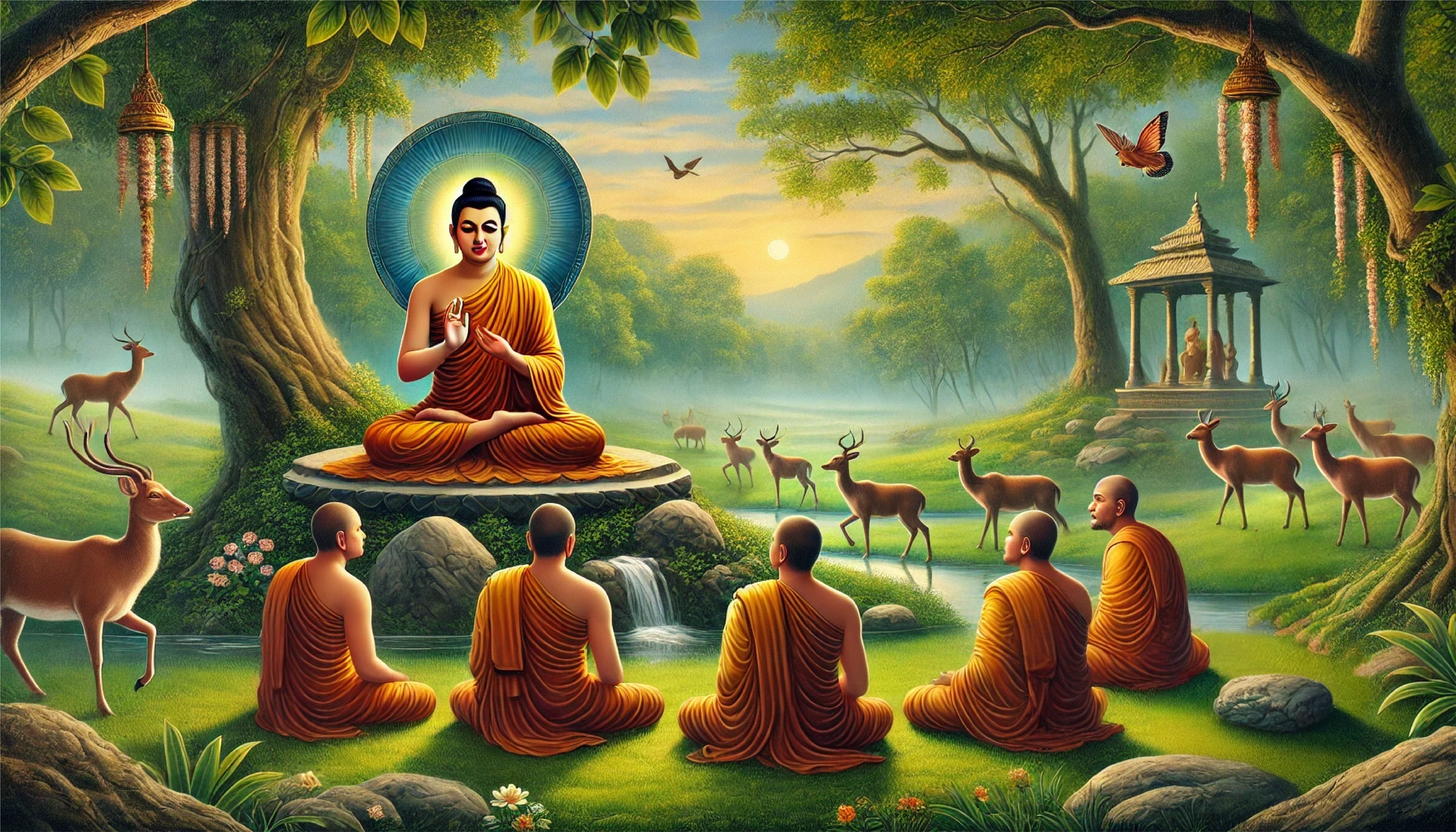
The First Sermon at Deer Park
Story: After attaining enlightenment, the Buddha was initially reluctant to teach, as he felt the truth he had discovered might be too profound for others to understand. However, he was eventually persuaded to share his insight. He traveled to the Deer Park in Sarnath, where he found the five ascetics who had once been his companions. To them, he delivered his first sermon, the Dhammacakkappavattana Sutta (The Setting in Motion of the Wheel of Dharma). In this discourse, he explained the Four Noble Truths and the Noble Eightfold Path as the way to end suffering.
Lesson: The Buddha’s first sermon is the foundation of all Buddhist teachings. The Four Noble Truths diagnose the problem of suffering and prescribe the path to end it. The Noble Eightfold Path offers practical guidance on how to live ethically, cultivate wisdom, and develop mental discipline.
Reflection: Reflecting on the Four Noble Truths reminds us that suffering is a part of life, but the Buddha’s teachings provide a clear path to transcend it. The first sermon marks the beginning of the Sangha (community of followers), which continues to preserve and practice the Dhamma to this day.
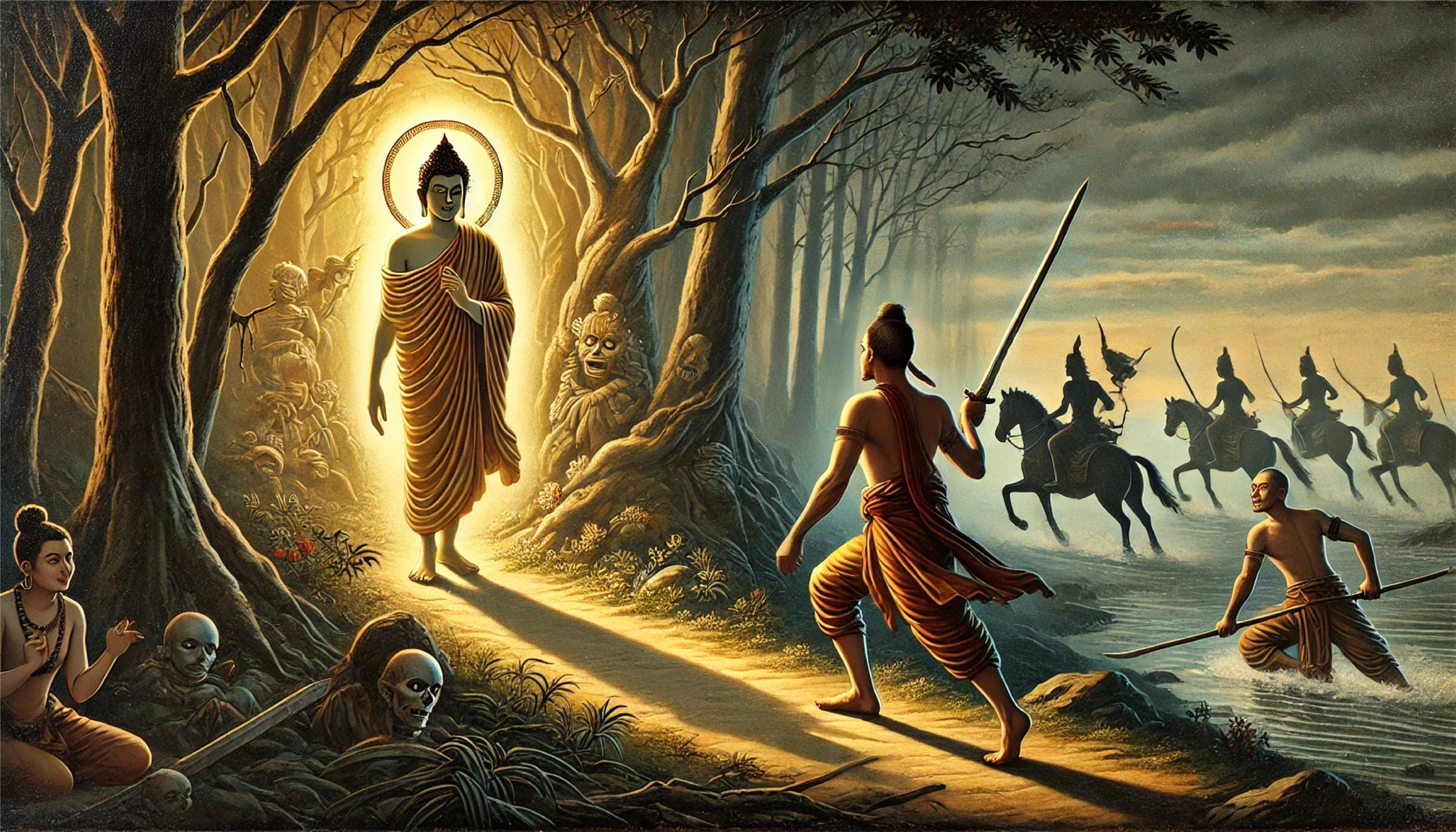
The Story of Angulimala
Story: Angulimala was a notorious bandit who killed hundreds of people and wore a necklace made of their fingers. He believed he needed to kill 1,000 people to gain ultimate power. However, when he attempted to kill the Buddha, he was unable to harm him. The Buddha spoke to Angulimala with compassion, explaining the futility of his violent life. Angulimala was deeply moved, renounced his ways, and became a monk. Eventually, through dedicated practice, he attained enlightenment.
Lesson: This story is a powerful example of the Buddha’s ability to transform even the most violent and misguided individuals through compassion and wisdom. It illustrates the concept of karma and shows that anyone, no matter their past actions, can change and reach enlightenment.
Reflection: Angulimala’s transformation is a testament to the power of the Dhamma. It encourages us to never give up on ourselves or others, no matter how deep the negative karma might seem. With the right guidance and effort, even the darkest paths can lead to liberation.
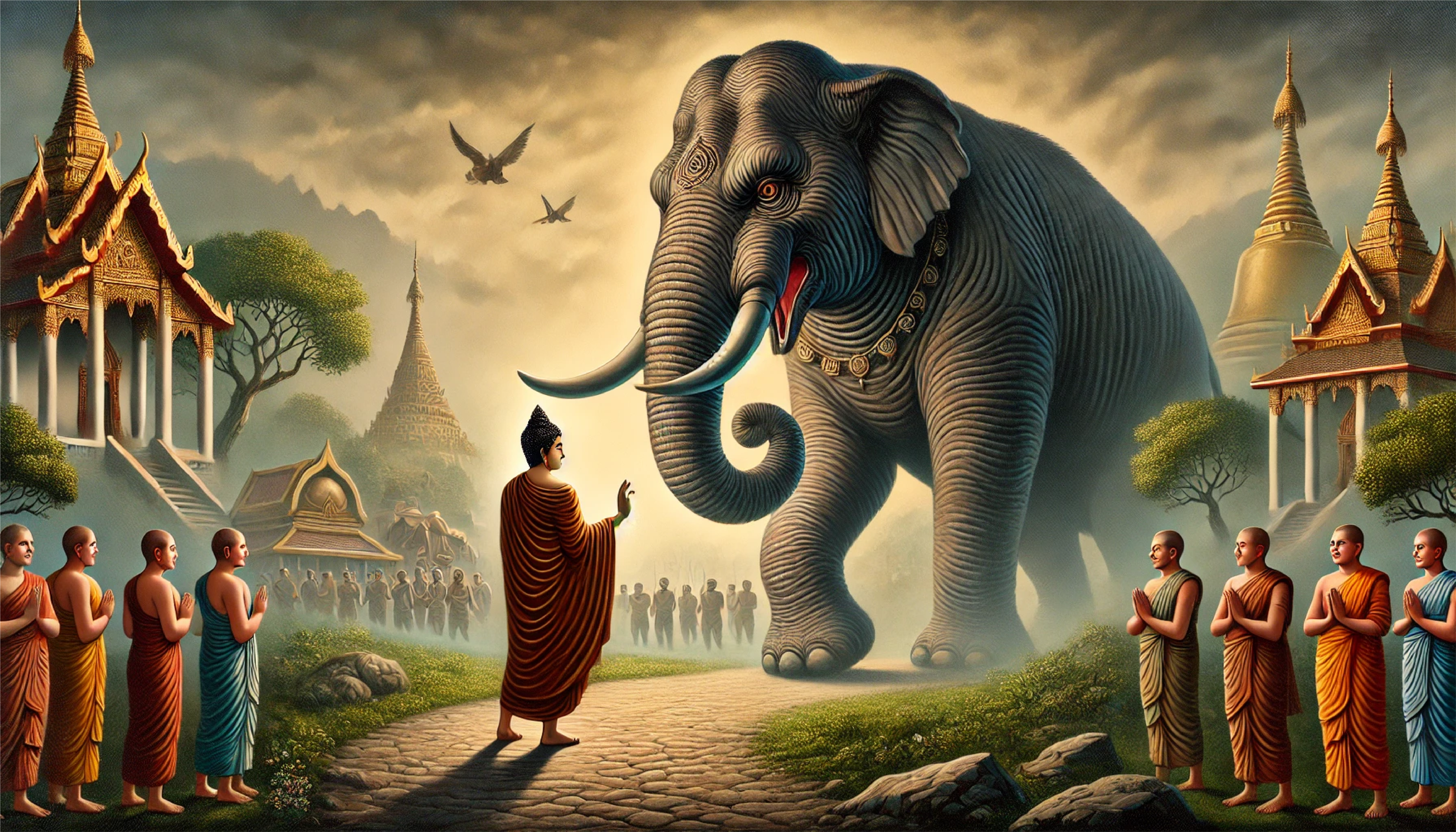
The Buddha Tames Nalagiri the Elephant
Story: Devadatta, the Buddha’s cousin, was jealous of the Buddha’s spiritual authority and tried to have him killed. He released a fierce, drunken elephant named Nalagiri to trample the Buddha. Instead of running, the Buddha remained calm and radiated loving-kindness (metta) towards the charging elephant. Nalagiri, upon encountering the Buddha’s serene and compassionate presence, immediately calmed down, bowed before the Buddha, and was tamed.
Lesson: This story illustrates the transformative power of loving-kindness, a key practice in Buddhism. Even a wild, violent animal can be tamed by the force of metta, showing that cultivating goodwill toward all beings can neutralize aggression and anger.
Reflection: For practitioners, this story is a reminder to meet hostility and anger with compassion and calm. It suggests that true strength lies in inner peace and kindness, rather than in aggression.
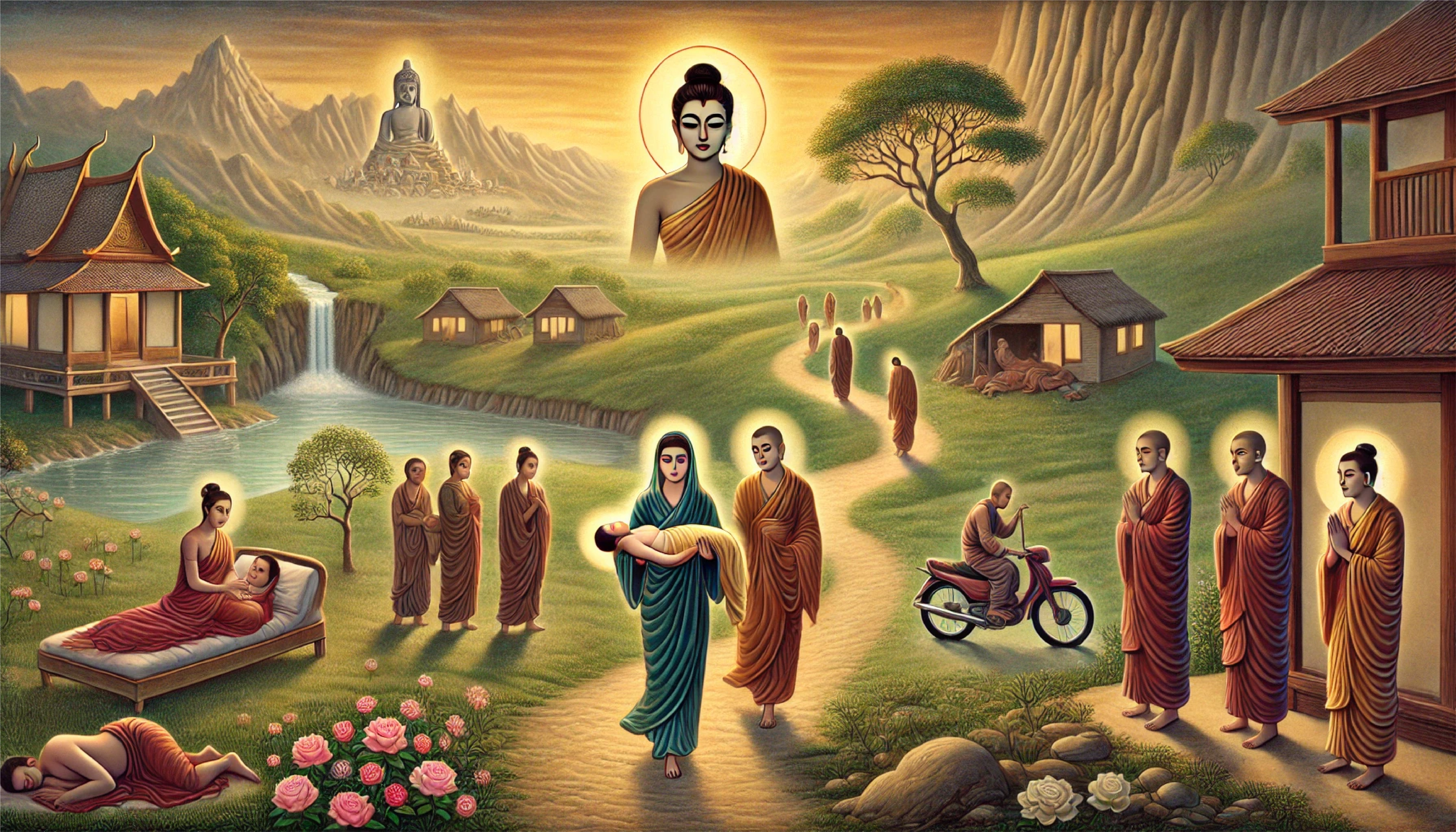
The Buddha and the Mustard Seed (Kisa Gotami)
Story: Kisa Gotami, a young mother, was devastated by the death of her only son. Carrying his body, she went to the Buddha, asking for a medicine to bring him back to life. The Buddha told her to bring a mustard seed from a household that had never experienced death. Kisa Gotami went from house to house but found that every family had lost someone they loved. She realized that death is universal and accepted the Buddha’s teaching on impermanence. She buried her son and became a devoted follower of the Buddha.
Lesson: This story teaches the reality of impermanence (anicca) and the universality of suffering. The Buddha’s approach helped Kisa Gotami understand that death is a natural part of life, and through this understanding, she was able to find peace.
Reflection: Kisa Gotami’s story encourages us to reflect on our own losses and to accept the impermanent nature of all things. It helps us find solace in the fact that suffering is shared by all beings and can be a powerful motivator for spiritual growth.

The Buddha and the Hungry Tigress (Jataka Tale)
Story: In one of his previous lives as a Bodhisattva, the Buddha encountered a starving tigress who was on the verge of eating her cubs out of desperation. Moved by compassion, the Bodhisattva offered his own body to the tigress, allowing her to eat him and thus save her cubs. This selfless act was one of the Buddha’s many sacrifices in his journey toward enlightenment, demonstrating his boundless compassion.
Lesson: The Jataka tales often illustrate the Buddha’s past lives and his development of the perfections (paramis) necessary for Buddhahood. In this story, the Buddha’s self-sacrifice embodies the perfection of generosity (dana) and compassion (karuna).
Reflection: The story of the hungry tigress inspires us to practice selflessness and compassion in our daily lives. It also shows that the journey to enlightenment is not only about personal liberation but also about helping others.
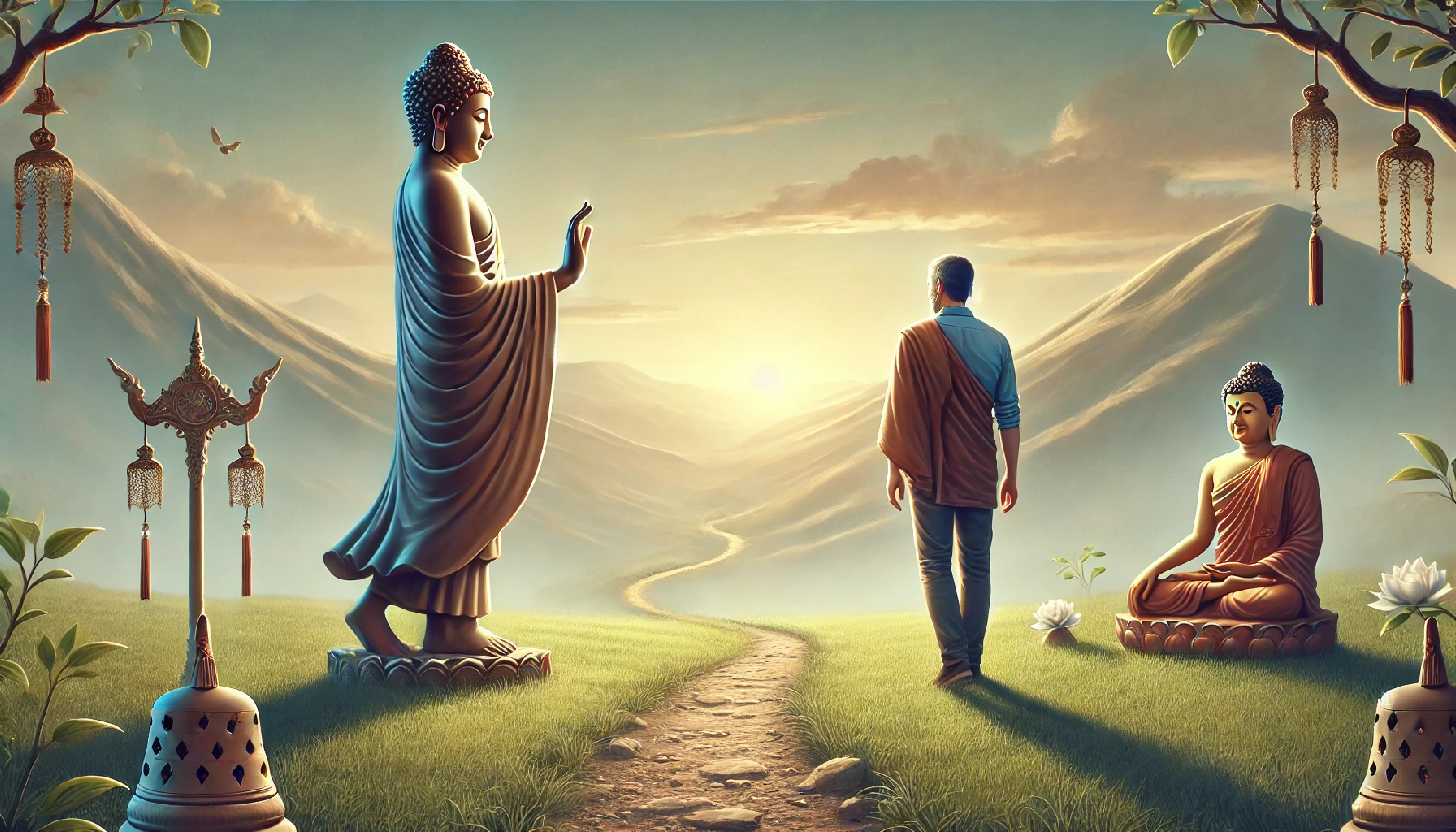
The Parable of the Raft
Story: The Buddha told a parable about a man who needed to cross a river. He built a raft to get to the other side, but once he reached the shore, he realized that carrying the raft further would be a burden. The Buddha explained that the Dhamma is like the raft—it helps one cross from the shore of ignorance and suffering to the shore of wisdom and enlightenment. However, once the journey is complete, one should not cling to the teachings themselves but continue to grow.
Lesson: This story teaches the principle of non-attachment, even to the teachings themselves. The Dhamma is a tool to reach enlightenment, but once it has served its purpose, attachment to it can become an obstacle.
Reflection: This parable encourages practitioners to let go of attachment to methods and ideas once they have fulfilled their purpose. It reminds us that the goal is liberation, and all other things, even the teachings, are a means to that end.